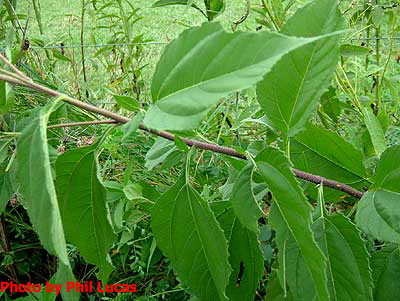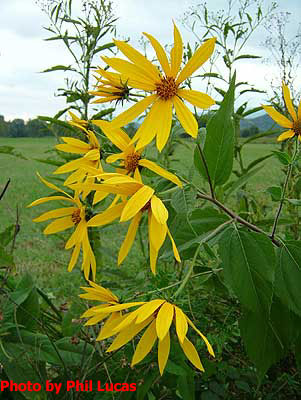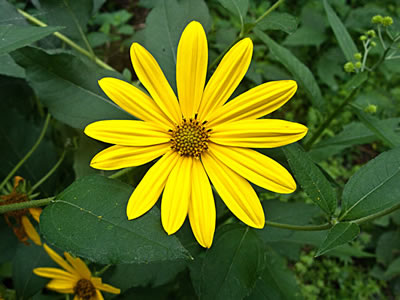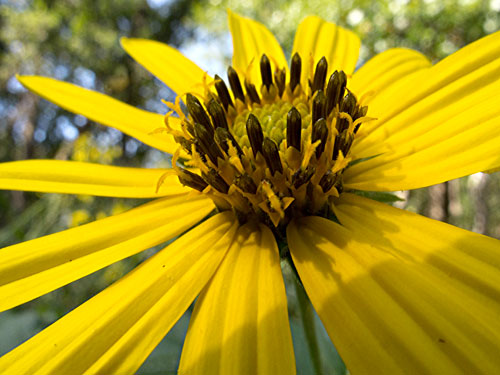 Jerusalem Artichoke
Jerusalem Artichoke
Helianthus tuberosus
From Floridata
Jerusalem artichoke is grown for its edible tuberous roots as well as its pretty yellow flowers. This is a large, gangly, multibranched perennial with rough, sandpapery leaves and stems, and numerous yellow flowerheads. It can get 10 ft (3 m) tall and its branches can spread to nearly as much. They sometimes break under their own weight, and often fall over. The edible tubers are produced just below the ground on thin white rhizomes. They are segmented and knobby, 1-4 in (2.5-10 cm) long, and have crisp, white flesh.

The edible tubers produced by Jerusalem artichokes are delicious and nutritious. The tubers can be harvested anytime starting about two weeks after the flowers have faded. Expect 2-5 pounds of tubers per plant. Jerusalem artichokes can be stored fresh in a plastic  bag in the refrigerator for several weeks, but it's better to leave them in the ground until you need them. Jerusalem artichokes are a pain to clean. They must be brushed and scrubbed under running water to remove the sand and dirt that hides among the knobs and folds, but they do not need to be peeled. Raw Jerusalem artichokes have a sweet nutty taste which has been likened to Brazil nuts. They are especially good grated into fresh salads, and are a perfect snack for dieters. Boiled and mashed they are rather similar to potatoes, and can be used like potatoes in most recipes. Jerusalem artichokes make delicious French fries. Bake with cream and cheese for a delicious (and decadent!) scalloped au gratin. Be careful not to overcook; Jerusalem artichokes will collapse and turn mushy within just a few minutes after they are fully cooked through.
bag in the refrigerator for several weeks, but it's better to leave them in the ground until you need them. Jerusalem artichokes are a pain to clean. They must be brushed and scrubbed under running water to remove the sand and dirt that hides among the knobs and folds, but they do not need to be peeled. Raw Jerusalem artichokes have a sweet nutty taste which has been likened to Brazil nuts. They are especially good grated into fresh salads, and are a perfect snack for dieters. Boiled and mashed they are rather similar to potatoes, and can be used like potatoes in most recipes. Jerusalem artichokes make delicious French fries. Bake with cream and cheese for a delicious (and decadent!) scalloped au gratin. Be careful not to overcook; Jerusalem artichokes will collapse and turn mushy within just a few minutes after they are fully cooked through.